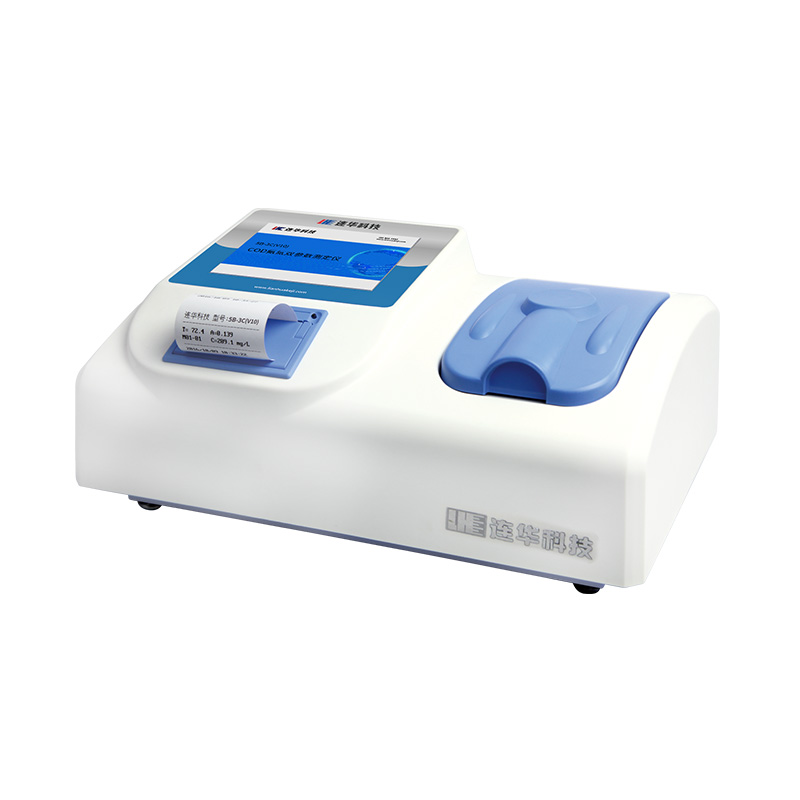Water quality testing COD testing standards:
GB11914-89 “Determination of chemical oxygen demand in water quality by dichromate method”
HJ/T399-2007 “Water Quality – Determination of Chemical Oxygen Demand – Rapid Digestion Spectrophotometry”
ISO6060 “Determination of chemical oxygen demand of water quality”
Determination of water chemical oxygen demand by dichromate method:
Standard number: “GB/T11914-89″
The potassium dichromate method uses a pretreatment operation of fully oxidizing the water sample in a strong acid solution and refluxing it for 2 hours, so that most of the organic matter* in the water sample is oxidized.
Features: It has the advantages of wide measurement range (5-700mg/L), good reproducibility, strong interference removal, high accuracy and precision, but at the same time it has long digestion time and large secondary pollution, and it needs to be measured in large batches of samples. The efficiency is low and has certain limitations.
shortcoming:
1. It takes too much time, and each sample needs to be refluxed for 2 hours;
2. The reflow equipment occupies a large space and makes batch measurement difficult;
3. The cost of analysis is relatively high;
4. During the measurement process, the waste of return water is astonishing;
5. Toxic mercury salts can easily cause secondary pollution;
6. The amount of reagents is large and the cost of consumables is high;
7. The testing process is complicated and not suitable for promotion
Water quality Determination of chemical oxygen demand Rapid digestion spectrophotometry:
Standard number: HJ/T399-2007
The COD rapid determination method is mainly used in emergency monitoring of pollution sources and large-scale determination of wastewater samples. The main outstanding advantages of this method are that it uses less sample reagents, saves energy, saves time, is simple and fast, and makes up for the shortcomings of classic analysis methods. The principle is: in a strong acidic medium, in the presence of a composite catalyst, the water sample is digested at a constant temperature of 165°C for 10 minutes. The reducing substances in the water are oxidized by potassium dichromate, and the hexavalent chromium ions are reduced to trivalent chromium ions. The chemical oxygen demand in water is proportional to the concentration of Cr3+ produced by reduction. When the COD value in the sample is 100-1000mg/L, measure the absorbance of trivalent chromium produced by the reduction of potassium dichromate at a wavelength of 600nm±20nm; When the COD value is 15-250mg/L, measure the total absorbance of the two chromium ions of unreduced hexavalent chromium and reduced trivalent chromium produced by potassium dichromate at a wavelength of 440nm±20nm. This method uses o Potassium hydrogen phthalate draws a standard curve. According to Beer’s law, within a certain concentration range, the absorbance of the solution has a linear relationship with the COD value of the water sample. According to the absorbance, the calibration curve is used to convert it into the chemical oxygen demand of the measured water sample.
Features: This method has the advantages of simple operation, safety, stability, accuracy and reliability; it has fast analysis speed and is suitable for large-scale determination; it occupies small space, consumes little energy, uses small amounts of reagents, minimizes waste liquid, and reduces secondary waste. Secondary pollution, etc., it is widely used in daily and emergency monitoring, making up for the shortcomings of the classic standard method, and can replace the old electric furnace heating national standard reflow method.
Post time: Jan-24-2024





